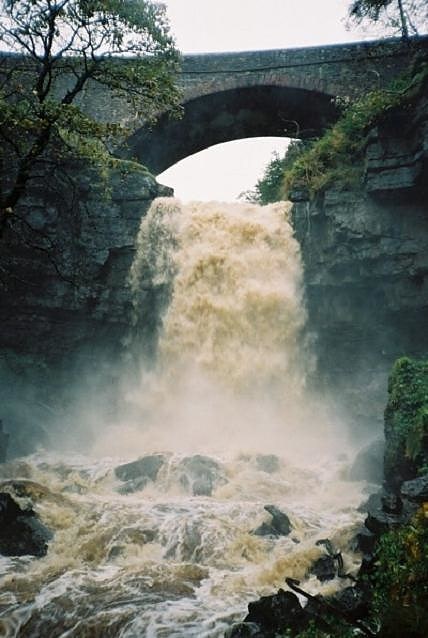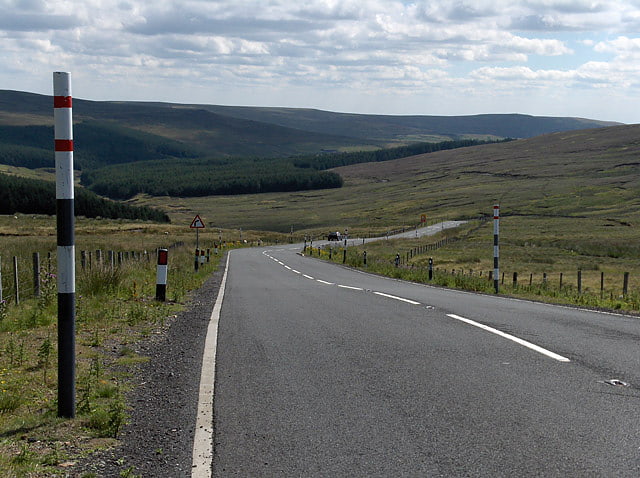Discover 4 hidden attractions, cool sights, and unusual things to do in Alston (United Kingdom). Don't miss out on these must-see attractions: Ashgill Force, Whitley Castle, and Ceramics at 1611 Gallery. Also, be sure to include Killhope Cross in your itinerary.
Below, you can find the list of the most amazing places you should visit in Alston (England).
Table of Contents
Ashgill Force

Tourist attraction in England. Ashgill Force is a waterfall near Alston, Cumbria, England.
The fall is located on Ashgill Beck and is reasonably easily accessible from the B6277 (which crosses a bridge over the beck just above the falls) or from Garrigill village, downstream of the fall. The beck downstream of the main fall is attractive in its own right and features several small cascades. It is a home to several wildlife species, including a much loved staple of British streams - dippers. There are ruins of former industrial buildings nearby, possibly from lead working, which the area was once famous for.
While less popular than nearby High Force, Hardraw Force and Cauldron Snout, Ashgill Force is nonetheless an impressive fall, plunging 55 feet over a rocky shelf. A visit to this fall will likely be more tranquil than one to its aforementioned more famous neighbours, as it attracts less tourists to obscure the view. The fall is comparable to the higher Hardraw Force. Arguably Ashgill Force has a greater volume of water tumbling over it. The shelf behind the fall is also much more easily accessible than at Hardraw. Indeed, access behind Hardraw Force is now officially prohibited. Given the forces present on an overhanging cliff with a waterfall, it is perhaps inadvisable to traverse the rear of any unfamiliar fall. Certainly, anyone who does makes that move at their own risk.[1]
Whitley Castle

Castle in England. Whitley Castle is a large, unusually shaped Roman fort north-west of the town of Alston, Cumbria, England. The castrum, which was first built by the Roman Army early in the 2nd century AD, was partly demolished and rebuilt around 200 AD. It appears to have been sited to protect lead mining in the area as well as to support the border defences of Hadrian's Wall.
Unlike most Roman forts that have a "playing-card shape" (rectangular with rounded corners), Whitley Castle is lozenge-shaped to fit the site. Numerous banks and ditches ring the stone ramparts, making it among the most complex defensive earthworks of any fort known in the Roman Empire.
The site was surveyed by the geologist Thomas Sopwith in the 19th century and the historian R.G. Collingwood in the 20th century. In 2012, a geophysics survey was conducted by a team from Durham University but it has not been fully excavated. Among finds at the fort are altars with inscriptions to Hercules by Legio VI Victrix (normally stationed at Eboracum) and to Apollo by the 2nd Cohort of Nervians, the garrison of auxiliaries. Other finds include a midden containing shoes; coins, fragments of Samian pottery, beads, nails, and a bronze handle shaped like a dolphin.
Whitley Castle (Epiacum) is referenced as the site of a fictional battle between fictional characters Uhtred of Bebbanburh and Sköll in the 2018 novel War of the Wolf written by Bernard Cornwell, the eleventh book in his Saxon Stories series. The author confirms the location in his introduction, but has given it the new name Heahburh.[2]
Ceramics at 1611 Gallery

Museum
Address: Market Place, Alston
Killhope Cross

Killhope Cross is a mountain pass in the English Pennines. The pass divides Weardale to the east and Cumbria to the west. The road over the pass, the from Hartlepool to Carlisle, Cumbria, connects the hamlet of Cornriggs in County Durham with the town of Alston, Cumbria. It is the equal highest paved pass in England with the Harthope Moss approximately 10 miles to the south, on the other side of Burnhope Seat.
The pass is named for a Grade-II-listed boundary cross at the highest point of the pass, described as "of uncertain date but possibly medieval".[3]